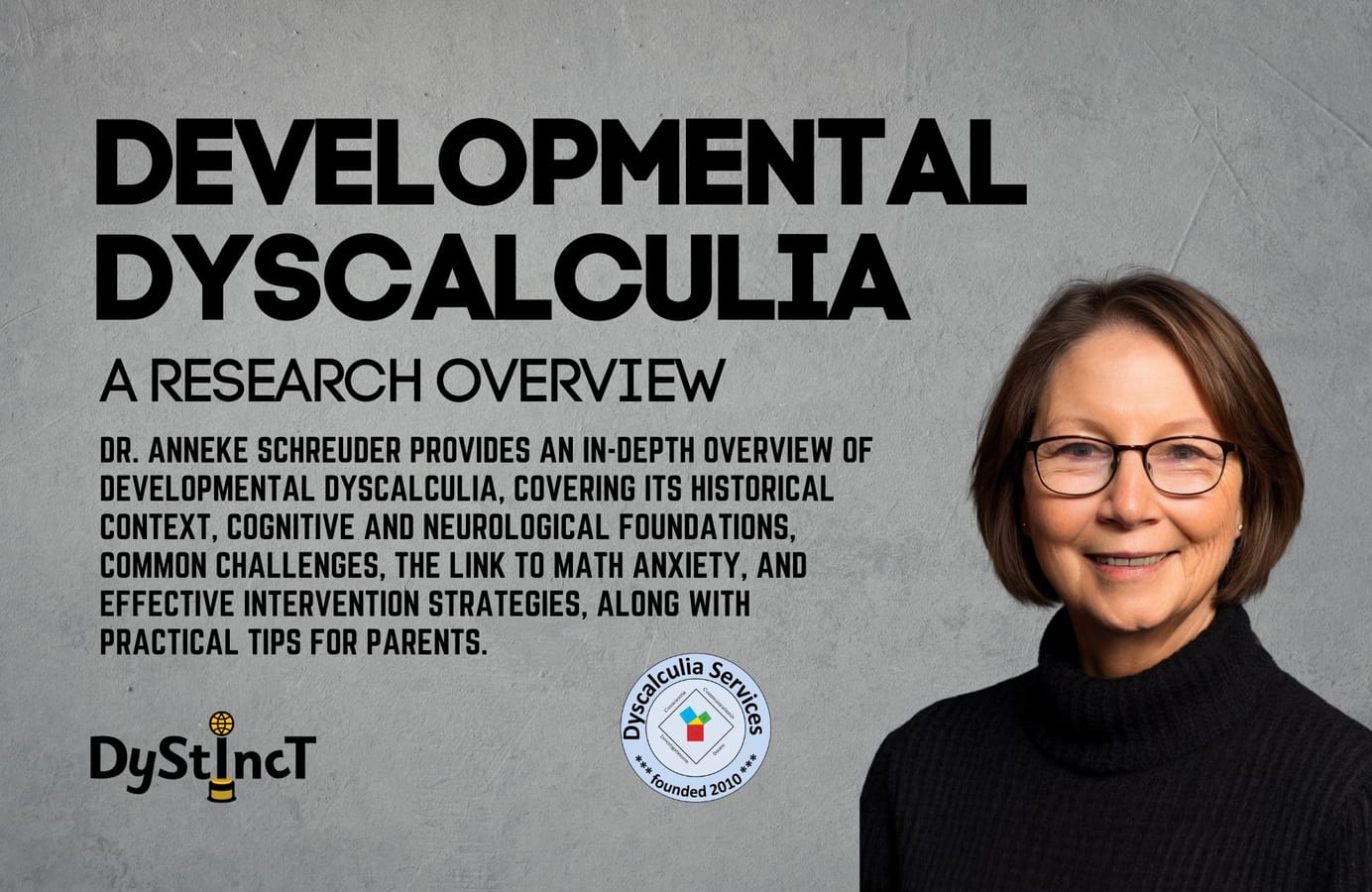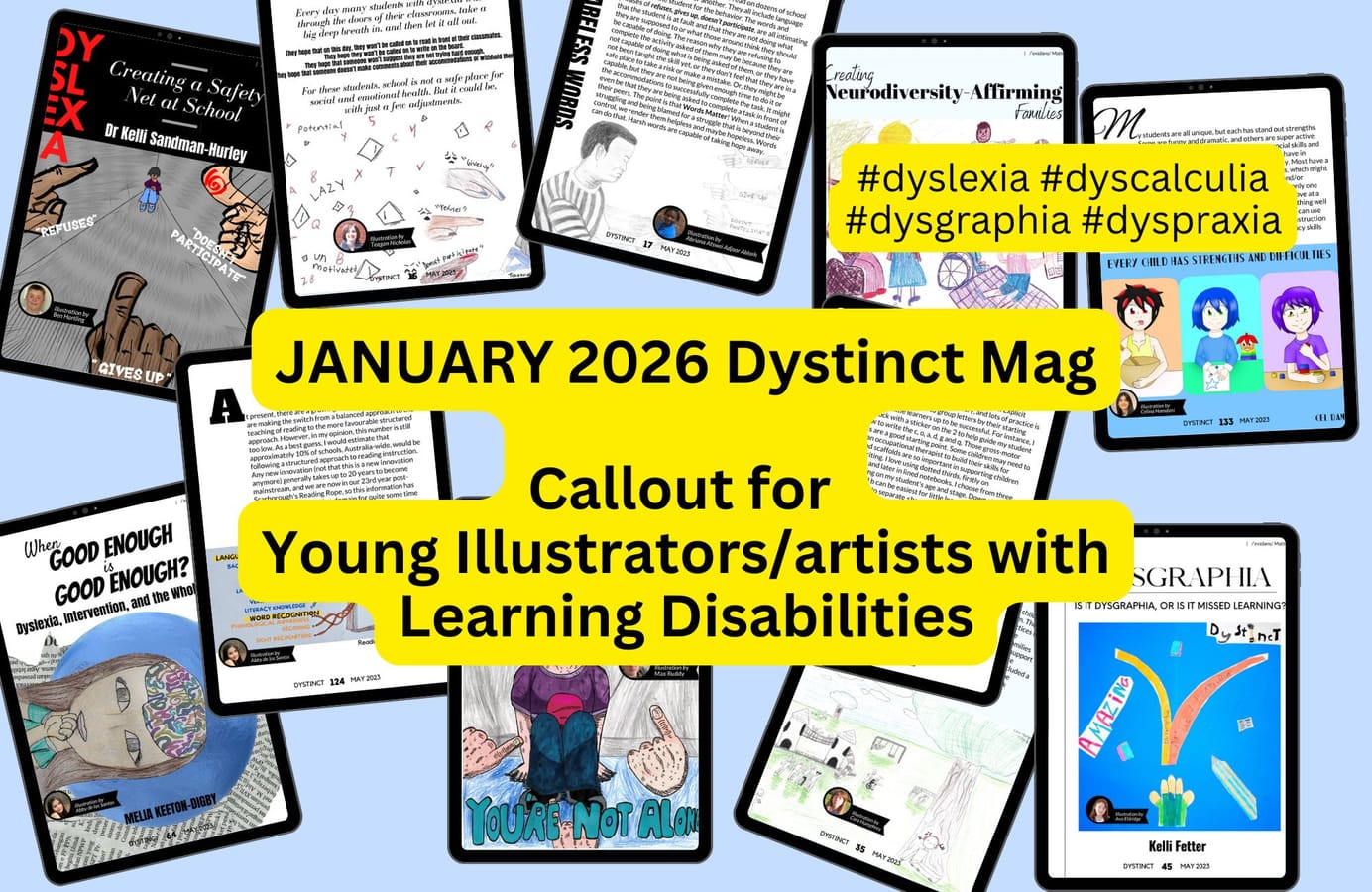
Issue 23: Developmental Dyscalculia: A Research Overview | Dr Anneke Schreuder
Dr. Anneke Schreuder provides an in-depth overview of developmental dyscalculia, covering its historical context, cognitive and neurological foundations, common challenges, the link to math anxiety, and effective intervention strategies, along with practical tips for parents.
Developmental dyscalculia is a specific learning disability that primarily affects an individual's ability to understand and manipulate numbers. This disorder typically manifests in early elementary years, often presenting as difficulty with basic arithmetic, and may later extend to challenges with abstract mathematical concepts. Despite gaining increased attention in recent years, developmental dyscalculia lags behind dyslexia in terms of awareness, research funding, and treatment development.
Historical Context
Historical Context
The recognition of dyscalculia as a distinct learning disability has evolved over the past century. In 1919, Swedish neurologist Dr. Salomon Henschen observed that individuals with otherwise normal mental abilities could experience significant difficulties with numbers. Dr. Josef Gerstmann's work in 1940 identified a syndrome characterized by difficulties in writing (dysgraphia), arithmetic (later termed dyscalculia), finger agnosia (not knowing which finger is touched when not visible), and left-right coordination. Dr. Ladislav Kosc, in the 1950s, first described developmental dyscalculia as a disorder affecting math-related brain functions, potentially hereditary or congenital in nature.
Development of Number Sense
Development of Number Sense
Research has shown that numerical awareness begins in infancy, with babies demonstrating the ability to distinguish small quantities. As children develop, they progress through several key stages. As toddlers, they realize that if you put three blocks in a row or scattered, there are still three blocks, and also that their colors or shapes don't matter, but when you add one or take away one, the number does change; this is called quantity conservation. They start reciting number words out of order or sometimes string them together into one long word before they connect each counting word with an item by moving it or pointing at it. They have developed what they call one-to-one correspondence. During Pre-K, they begin counting on their fingers, and they realize that the number of objects in a group is the last word you hear when you have finished counting. We call this cardinality. They enjoy demonstrating their newly learned skill of counting the pips on dice and dominoes, and they start to recognize the patterns without counting, which is called subitizing. Then, they learn to produce the exact number of blocks you ask for. They recognize the largest of two quantities, increase the number of items they can count and learn more counting words. Variations in the rate of acquiring these skills may indicate potential future difficulties with mathematics.
Understanding Dyscalculia
Understanding Dyscalculia
A variety of diagnostic measures, cut-off criteria, and exclusion criteria are used to diagnose this learning disability. Research into dyscalculia has revealed several key characteristics:
- Impaired intuitive understanding of numbers and their relationships, leading to difficulties with tasks such as counting up, counting down, quantity comparison, and recognizing shapes, sizes, and patterns.
- Difficulties memorizing the basic math facts, with calculations, particularly with mental math, developing an internal number line (limited magnitude knowledge) and/or mathematical reasoning.
- Performance one to two years below grade level.
Neuroimaging studies have revealed structural and functional differences in the brains of individuals with dyscalculia, particularly in regions associated with numerical magnitude processing, such as the intraparietal sulcus, which is the location of a quantity representation system that can both process small quantities exactly (subitizing) and approximate and compare larger quantities (using the Approximate Number system). This led to the assumption of a core neurological deficit. The triple code model emphasizes the importance of the intraparietal sulcus and occipitotemporal regions for symbol recognition (our written numerals), as well as the language network for number words and math terms. Recently, parallels have been found in the processing of magnitudes related to time, rhythm, and space, suggesting a more general magnitude system.
This post is for paying subscribers only
SubscribeAlready have an account? Log in


